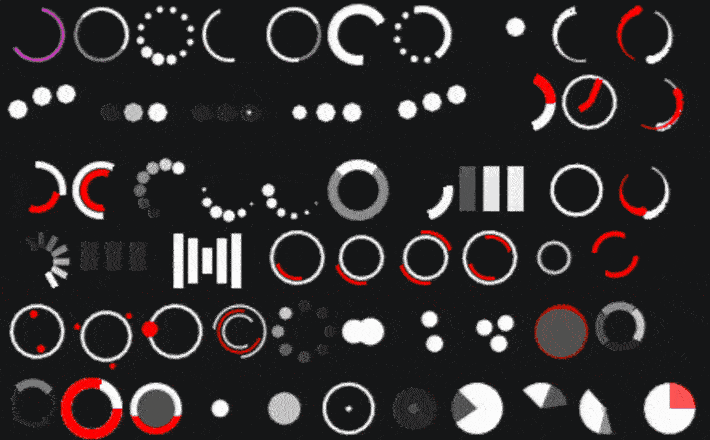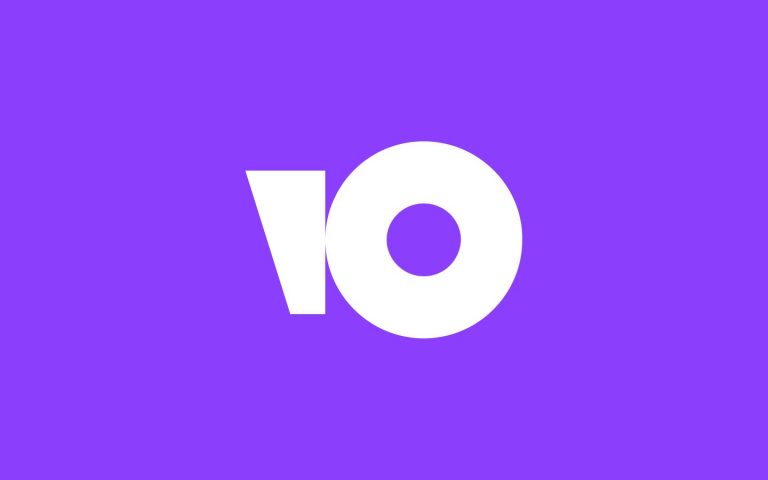how we solved support scaling issues in Orion soft

Imagine the situation: your business is growing, the number of projects is increasing, and the system for managing them is no longer convenient. And finishing it is not an option. How to choose the best replacement solution, take into account all the nuances, prepare and painlessly switch to a new system?
In this article, I will tell you about our experience of implementing the RockIT Manager ITSM solution as a replacement for open source Redmine. We prepared and transferred all the accumulated data to the new management system, added important functions for working with external customers and increased usability for the internal team. And in the end, I will prove to you that the implementation of a new ITSM system is worth the candle, despite all the difficulties.
First there was Redmine
Orion soft is a Russian IT company, a software developer, known primarily for its key product – the zVirt secure virtualization environment management system.

At the dawn of zVirt development, Orion soft chose Redmine as the main ticket management solution. The GPL distribution model, open source code, and many plugins really looked attractive at that time. Orion soft specialists independently customized the application for their needs. As a result, it combined Service Desk for working with customer requests and an open knowledge base for the company's products.
Redmine as a customer portal integrated with mail has been working in Orion soft since September 2022. Customers left requests via email or directly through the site. Through Redmine, they received demo access to the support service and the ability to manage their requests.

At the same time, Orion soft support specialists managed projects in the system. The portal was also used for the company's internal needs: viewing technical support statuses, creating accounts for new employees, and managing other internal processes.
And everything went well until Orion soft developed only zVirt. However, with the emergence of new products, the number of applications and users of the application grew. The company simply outgrew Redmine, and then vendor support in Russia fell off. In general, everything was heading towards a complete replacement of the ITSM platform.
What else was wrong with Redmine
Outdated design. The platform no longer met both customer expectations and the company's marketing needs.
Inefficient project organization and overloaded interface. The original principle of “one project – one card – one customer” stopped working as the product line expanded. This led to the appearance of many duplicate records and significantly worsened the user experience.
Increased workload and confusion in applications. The company launched four new products, but due to system setup issues, tickets for all products were handled by a single support team, and customers had no good way to indicate which product their ticket was for.
Malfunctions. Redmine was backed up twice a day: in the morning and in the evening, and, oddly enough, this caused problems. During the backup, the system would freeze for five minutes or more. It was simply difficult for it to digest the volume of data that had accumulated over several years of operation.
The task: find a replacement and smoothly move in
So, in November 2023, the Orion soft team approached us for help in replacing Redmine. To begin with, we recorded the main parameters and expectations from the new solution:
Flexible system customization to suit the logic of the company's processes.
Regular technical support from the supplier.
Orion soft wanted to focus on supporting its own products instead of fine-tuning Service Desk, so the system had to be easily adapted to the specifics of business processes without involving developers, by business analysts without programming skills. Integration with CRM, internal services and ITSM-system of partners was planned.
Partnership solution
K2Tech is a long-standing partner of Orion soft. Usually we deploy their software to customers, but this time we did the opposite — we offered a solution to zVirt developers. We understood their needs quite well, analyzed ITSM solutions presented on the market, and settled on the domestic RockIT Manager solution based on the Comindware platform.

We gave a detailed presentation of RockIT Manager, showing process settings and the structure of reference books. Our colleagues, in turn, demonstrated how they work with requests in Redmine. Based on a comparison of the functionality of both systems, we identified the key elements of Redmine that needed to be preserved and identified suitable and unsuitable components of RockIT Manager. This allowed us to create a list of initial changes required for the normal launch of the new system. Two months were allocated for implementation and data migration. The launch of the new system was scheduled for March 2024.
Finalization of the new ITSM system
After demonstrations and comparisons, we began preparing to modify the boxed RockIT Manager, because the software should reflect business processes, and not the processes should adapt to the software.
Creation of organizational units
RockIT Manager is a classic ITSM solution with a “client → request” approach. That is, when entering the portal, an employee can only work with personal requests or those where he is indicated as the recipient of the service.
However, Orion soft provides services to organizations, not individuals, so we have created organizational units for customers with the possibility of group participation. Now all representatives of the customer see the full list of applications of their organization, and can replace each other if necessary.

Changing the structure of product data
Orion soft has a different approach to the service structure than classic ITSM solutions. The company provides and supports entire products as services. That is why we have changed the data storage structure in RockIT Manager. In our version of RockIT Manager, zVirt, Termit, Nova and other products act as services, and their versions act as configuration units.

Structuring agreements
We have structured all customer agreements for the provision of specific products and linked them to the corresponding support levels. This allows us to immediately determine when a request is received:
which customer did it come from;
for which product and its version;
what level of support is provided.

This will make it much easier to control support terms in order to approach customers in a timely manner with an offer to extend agreements.
Modernization of the user's personal account
We have modified the standard personal account to improve the vendor's customer service. Now customers receive comprehensive information about their organization and can easily track:
what products were purchased;
what agreements apply to them;
the terms of these agreements;
number of existing licenses;
list of employee accounts;
active and inactive requests for the entire period.
All this data is displayed in the card of each customer company:

Adapting the Incident Handling Process
In classic IT service management, requests have different life cycles. Many issues are resolved quickly, immediately upon request, for example, by rebooting the computer.
Orion soft, as a vendor, has a different specificity. Almost all of their requests are complex cases that require several iterations of interaction with the customer. After registering the request, an active dialogue begins: support staff clarify details, offer to make changes, request logs. This process can take a long time and include several lengthy stages.

In this regard, we have changed the response time control system in RockIT Manager. Now, each action in the company has a clear deadline. This applies not only to registering requests, but also to responding to customer comments within an hour. The system does not limit the time for making decisions, but monitors compliance with the response time for each new action on the part of the customer. In addition, we have optimized the process of exchanging comments, taking into account their large volume and constant flow.
Data restructuring as the main difficulty of switching from Redmine to RockIT Manager
As new products were introduced into Redmine, the data multiplied and often duplicated. For each product purchased by one customer, separate project cards were created. Or here's another example: previously, all information about customers, partners, distributors, purchased licenses, support levels, and additional conditions was stored in single lists with notes inside the cards.
The Orion soft team was experiencing a rapidly growing number of requests. It was becoming increasingly difficult to determine the level of support for each client and the correct order of processing requests, which led to inefficient use of resources in the long term.


Therefore, we spent most of the time during the transition to the new system not on setting up RockIT Manager, but on restructuring data from Redmine.
We automated data processing by studying its storage structure and developing analysis rules. For this, we used Node-RED — this tool helped apply the rules and obtain a structured result for recording in the target system. The process included several iterations, including direct connections and working with Excel.

We have organized this information into separate categories:
Products and their versions;
Customers (as organizational units with additional characteristics);
Types of agreements;
Support levels;
Support Agreements;
After processing the data, we discussed the results with colleagues, transferred the data into the system and analyzed their distribution. We redid everything again if it turned out illogical or simply incorrect, and so on time after time. However, for example, cases where it is difficult to clearly determine the type of organizational unit (distributor or partner) required revision already in the process of operating the system.
Launching and testing RockIT Manager
As planned, we launched RockIT Manager in March 2024. We started with a two-week test period. During this time, Orion soft specialists themselves acted as project testers. They processed requests on an industrial stand and checked the correctness of the system, compliance of settings and data with expectations.
Then we agreed on the date of the transition to the new system and notified all interested parties. Orion soft sent messages to customers, posted information in Redmine, published an article about the platform replacement and wrote news in the Telegram channel. On the appointed day, all customers were automatically sent logins and passwords to access the new portal. Thus, more than 2 thousand users began working in the new system.
The transition was not without technical hitches. First, the mailbox was full, which caused the mail integration to be disabled. We had to urgently restore it. Then, a few days after the platform update, the password recovery function stopped working. This problem was quickly solved by installing an update from the vendor Comindware. But nothing critical broke, so despite everything, the move went smoothly.
Refinement and additional system configuration
After the project was launched, we changed the format for viewing the correspondence history, updated the portal design and optimized the layout of widgets in accordance with user feedback. To simplify work with requests, we added organizational unit attributes to the form. Now, in the request, it is immediately clear whether the customer is a partner and what type of agreement they have (basic support, demo access, etc.). Such seemingly small things create a good user experience.
In addition, a feature called “I'm on duty” was developed for the night shift. A special button appeared in the system that displays the engineers on duty during the night shift. When activated, the engineer receives notifications about all new requests, including those assigned to colleagues. This allows you to be aware of all requests received at night.
As the system was mastered and technical capabilities expanded, colleagues encountered new requirements and more complex tasks. The key element of further development of the project was integration with the internal CRM system and IT systems of partners.
Implementation results and benefits of RockIT Manage

When replacing Redmine with RockIT Manager, the Orion soft team was guided by three main criteria: the ability to develop the system, ease of support, and ease of modification. The Comindware BPM platform, on the basis of which RockIT Manager was created, fully meets these requirements. However, we consider the main achievement of this project to be the expansion of the capabilities of support staff. Now they do not just follow existing processes, but actively search for and independently implement ways to optimize them. The flexibility of the new system allows colleagues to independently adapt and customize the platform to their needs:
Improved data structure allows for more efficient control of products and support levels for customers. All necessary information is now available in the customer card;
Monitoring the validity periods of agreements allows you to begin contract renewal procedures in advance;
Optimization of processes and involvement of other departments to perform some functions (for example, sales managers to manage customers) allowed us to remove unnecessary workload from the technical support team and focus on processing requests from customers;
An important positive marketing effect. It is obvious that working with a modern and functional website is much more pleasant.
In the area of technical support, ITSM systems are the vendor's face for customers. That is why the quality and level of service are of such great importance. Despite the complexity of budget justification, it is important to consider long-term benefits for ITSM implementation or replacement projects. Optimization of processes and automation of routine tasks over time have a positive effect on both the quality of customer service and the company's financial performance.



